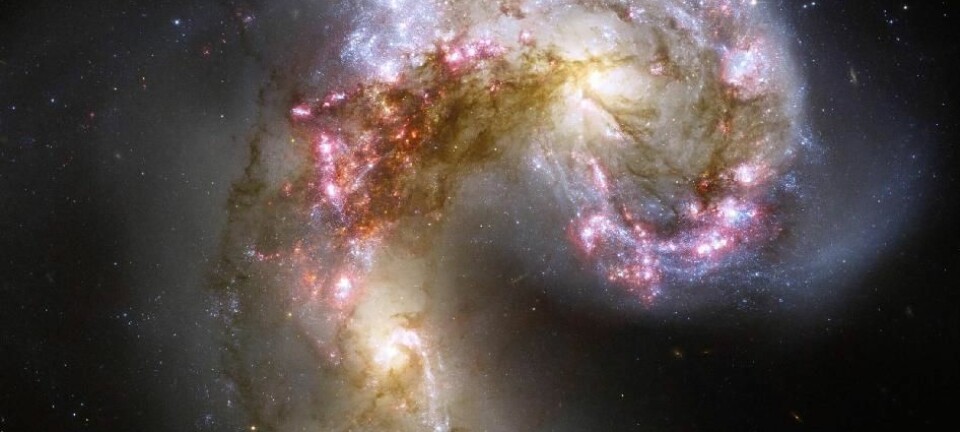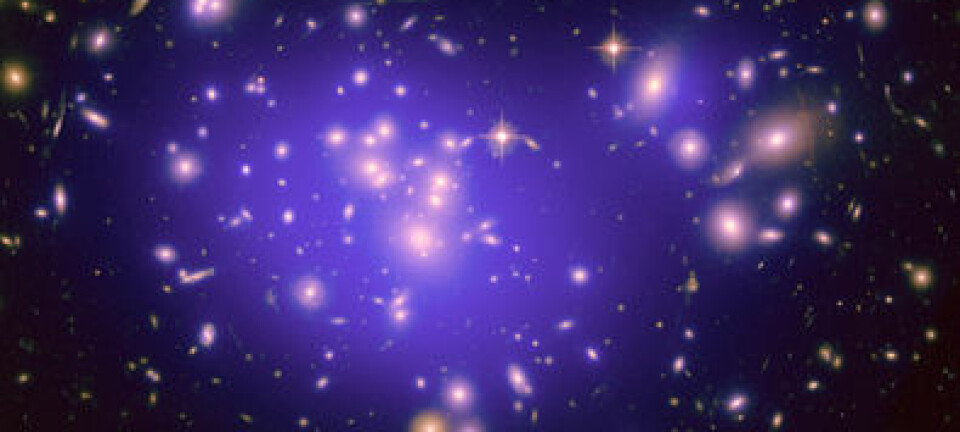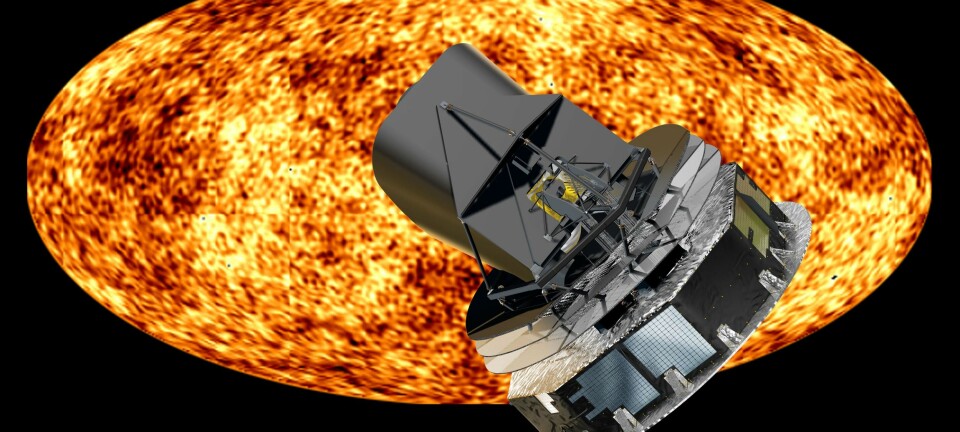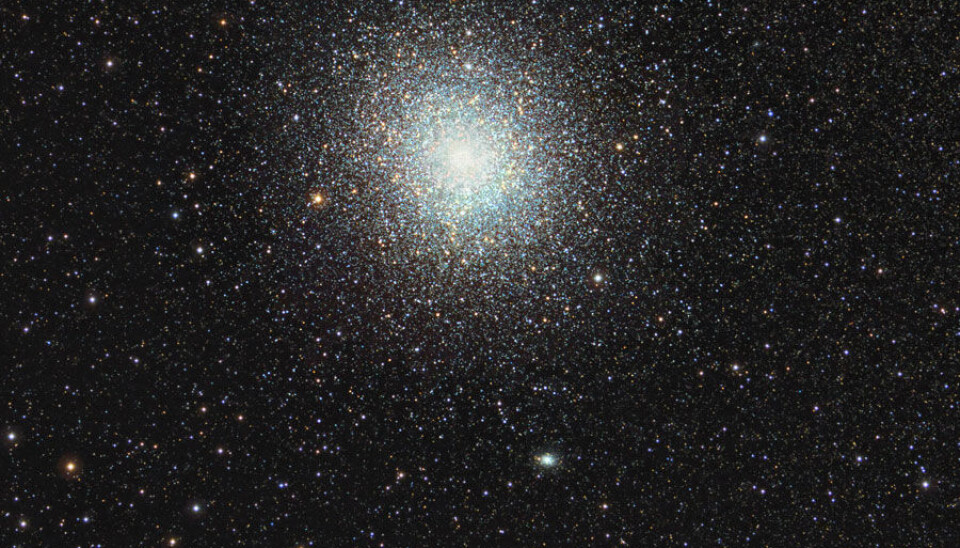
Stars in globular clusters form communities
The stars in a globular cluster rarely communicate on a one-to-one basis. Instead, they follow the rules of communities.
Globular clusters – gigantic collections of stars – have long mystified astronomers: researchers have not been able to recreate the form of globular clusters using their theories.
But now scientists at the University of Copenhagen and elsewhere have developed an explanation for the way the stars in a globular cluster affect each other and give the globular cluster the form it has.
The explanation is a result of studies conducted by Jens Hjorth of the University of Copenhagen’s Niels Bohr Institute, Associate Professor Liliya Williams of the University of Minnesota, and Associate Professor Eric Barnes of the University of Wisconsin-La Crosse.
“For me, globular clusters are interesting systems made up of many stars that interact solely on the basis of Newton’s well-known laws of gravity,” says Hjorth.
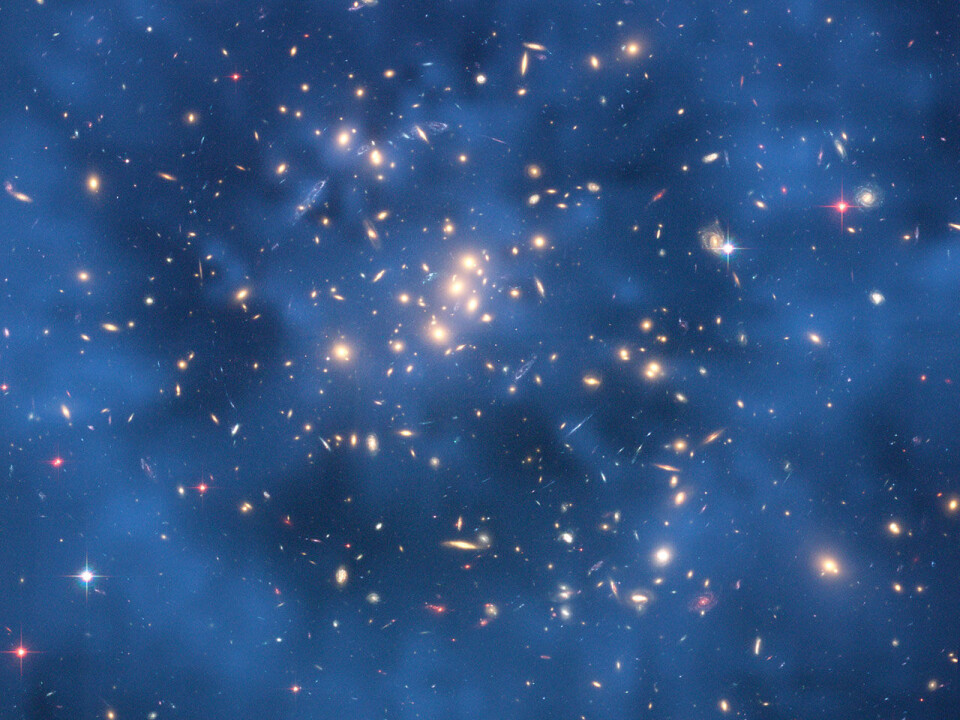
“We should therefore be able to understand why they have the form they have. We didn’t fully understand something so apparently simple, and that aroused our curiosity.”
Globular clusters are affected by two processes, not just one
A globular cluster is a large collection of stars numbering from 100,000 to 1,000,000. The stars are so far from each other that they almost never collide, but on the other hand the distances between them are so small that they encroach on each other’s private sphere and thereby involuntarily form a community.
The forces that keep everything together are generated by the individual stars’ gravitational fields.
To date, astronomers have believed that the shape of a globular cluster is the result of the way in which the individual stars exchange energy in a form of communication.
We’ll risk our reputations and claim that the development of globular clusters is dominated by collisionless processes.
Jens Hjorth
The theory has been that a star is only affected by the gravitational field of the stars it passes at any moment – and is little affected by the gravitational field of the other stars.
One can say that a star collides with another star’s field of gravity and thus loses or gains a small amount of energy.
Consequently, the star is then pushed in a slightly different direction. Thus the stars are spread through collisions with other stars’ fields of gravity.
Scientists have been convinced that such ‘collisions’ between couples of stars have together generated dynamics that have controlled the development of the globular cluster.
All stars affect every star in the cluster
As with so many other astronomical objects, you can study a globular cluster because it is interesting in itself, or you can try to use its properties to answer other questions.
Jens Hjorth
The problem with this is that the theory does not match the observations, which caused Hjorth and Williams to consider whether another mechanism might be playing a role.
Their initial thoughts were that each individual star was perhaps controlled by a force operating throughout the cluster and generated by the sum of the gravitational fields of all the other stars in the cluster. This force is not constant, but varies from place to place and over time.
Hjorth and Williams have tested this theory against other scientists’ observations of how the light of globular clusters is distributed as a function of the distance of each star to the cluster’s centre.
The researchers call this distribution the cluster’s brightness profile; they compared the observations with two theoretical profiles:
- One profile is based on the belief that the star systems are dominated by an exchange of energy through ‘collisions’ between a star and a second star’s field of gravity.
- The other profile is based on a ‘collisionless’ exchange of energy between the cluster’s stars – in other words, there is an interplay with a field of gravity that is uniform throughout the cluster, but which can vary over time.
“Somewhat surprisingly, it is this second profile that gives the best match with the observations,” says Hjorth. “So we’ll risk our reputations and claim that the development of globular clusters is dominated by collisionless processes.”
Collisionless dynamics dominate large globular clusters
The two researchers also studied whether the number of stars in a cluster play a role in which of the two processes dominates. They found that the size of the cluster does have considerable importance.
“There is no doubt that that the collisions are vital for the globular clusters’ inner dynamics,” says Hjorth. “What we are saying is that there is also an element of collisionless dynamics in this.”
When the number of stars is sufficiently large, it is no longer their mutual relationships that count – a community arises and it has a force and strength that affects the individual members of the community.
In a cluster with millions of stars, the stars will communicate in pairs in the centre, but not elsewhere – at least not within the universe’s lifetime of 13.6 billion years.
Star-to-star communication will still play a role if one observes the clusters over considerably longer time periods, which cannot be done for obvious reasons.
Globular clusters are a natural laboratory
The two scientists point out that they have not conducted the study just to be better informed about globular clusters – the perspectives in their work are much larger.
They regard globular clusters as nature’s own laboratory, which gives scientists ideal opportunities to study what happens when a large number of particles – in this case stars – are collected together in a restricted space, and gravity is the only force at work.
“As with so many other astronomical objects, you can study a globular cluster because it is interesting in itself, or you can try to use its properties to answer other questions,” says Hjorth.
“Personally, I am not really interested in looking at globular clusters as astronomical objects, but they are ideal for gaining knowledge about some of the fundamental processes in the whole of the universe. And I think that’s great!”
----------------------------------
Read this story in Danish at videnskab.dk
Translated by: Michael de Laine
